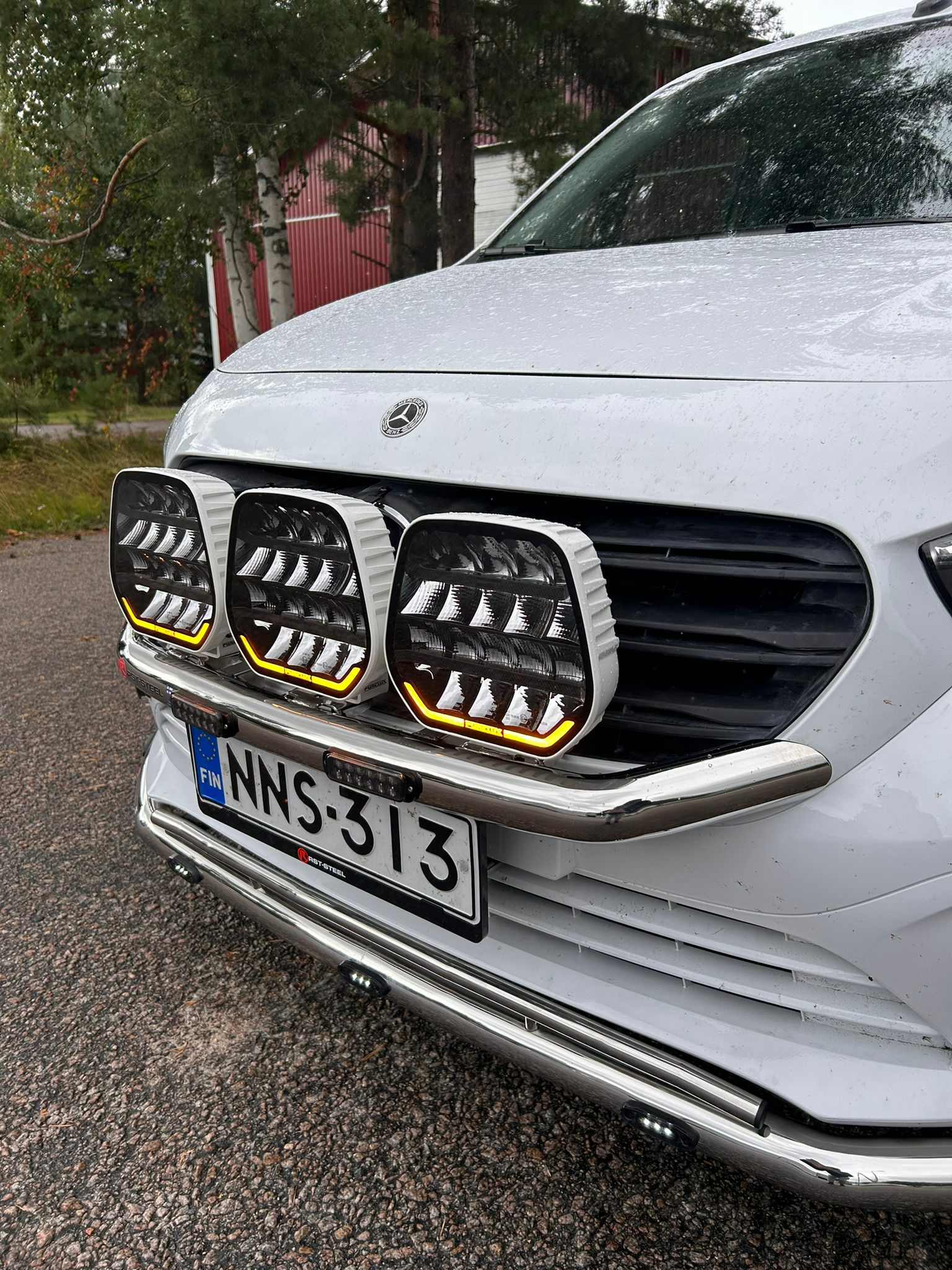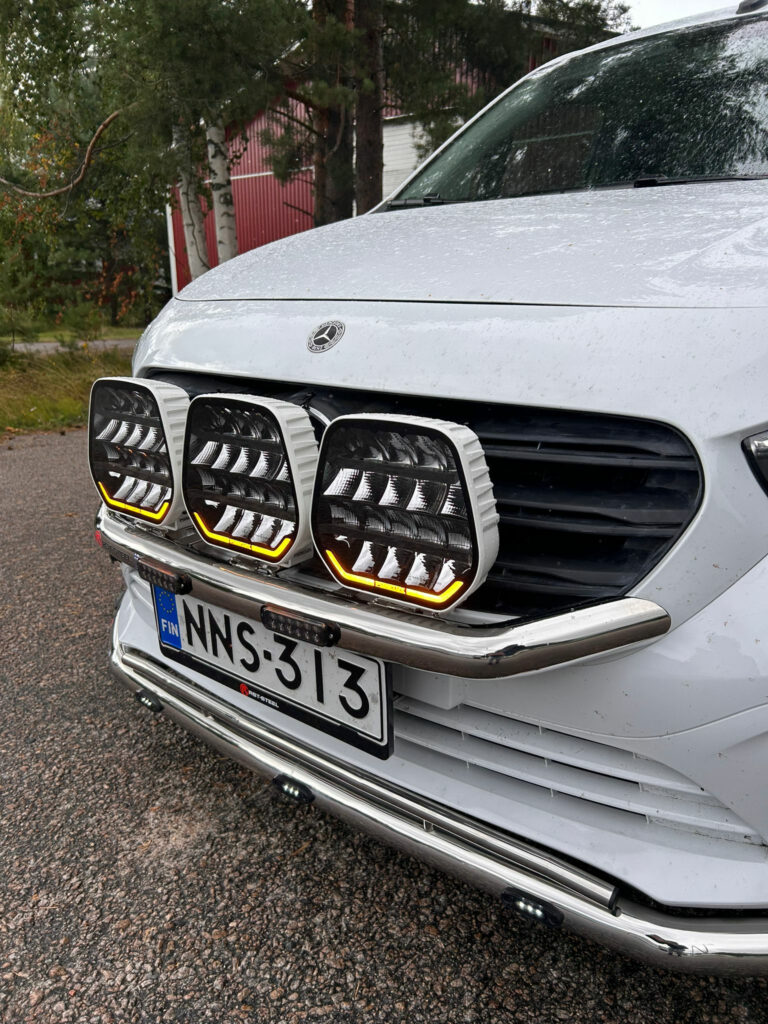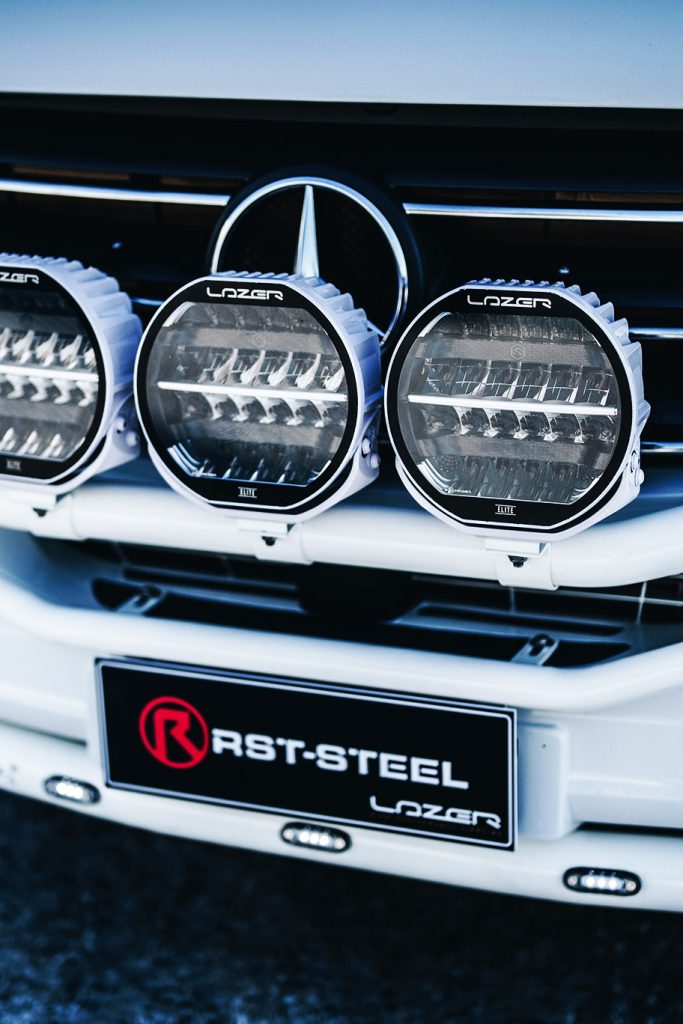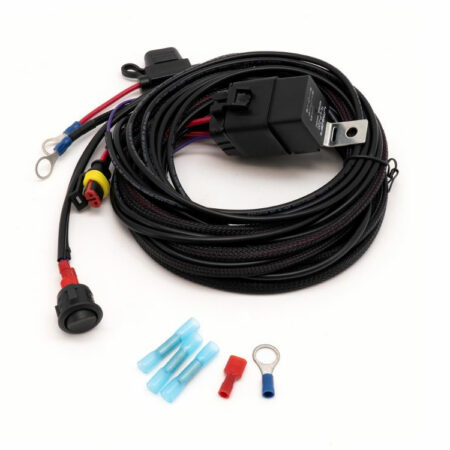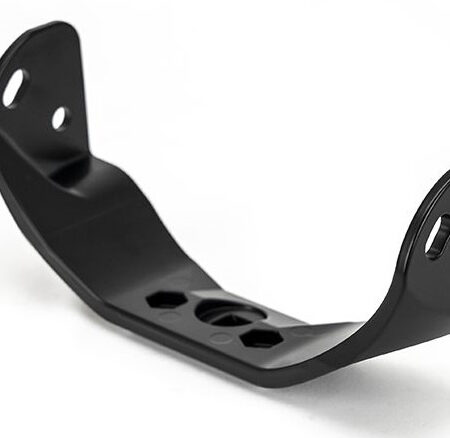Auxiliary lights can only be used in specific conditions and situations. The general rule is that they may be used only in low light or darkness when they do not dazzle other road users. Their use in urban areas is prohibited, and they must be switched off when approaching other vehicles. Legal use also requires proper installation and type approval.
What Does the Law Say About Using Auxiliary Lights?
Finnish traffic law defines strict rules for using auxiliary lights. The principle is that auxiliary lights are allowed only when they improve road safety without disturbing other drivers.
Lights that can dazzle or confuse other road users are prohibited. These regulations aim to protect all road users and prevent accidents caused by glare. Auxiliary lights must be properly installed and type-approved. Misuse can lead to fines and temporary vehicle bans.
Difference Between Auxiliary Lights, Work Lights, and Marker Lights
-
Extraljus complement standard headlights and may be used while driving under certain conditions.
-
Arbetsljus are intended only for use when the vehicle is stationary for work purposes.
-
Marker lights indicate the outline of a vehicle and improve visibility.
Lazer auxiliary lights are a prime example of high-quality LED lights providing bright, even illumination. Work lights must never be used while driving, whereas marker lights may be used as part of the vehicle’s standard lighting.
When Can Auxiliary Lights Be Used While Driving?
Auxiliary lights may be used on rural roads, highways, or motorways in darkness or low visibility. They must be switched off immediately when meeting or overtaking other vehicles.
Permitted situations include:
-
Dark conditions on rural roads
-
Fog, rain, or snowfall
-
Dusk when headlights alone are insufficient
-
Off-road driving on private roads
Lights must always be switched off upon entering urban areas or when encountering traffic. Misuse endangers road safety and is illegal.
Why Are Auxiliary Lights Prohibited in Urban Areas or When Meeting Other Vehicles?
The main reason for prohibiting auxiliary lights in towns and during encounters is glare. Bright lights can temporarily blind oncoming drivers, causing serious accidents.
Urban street lighting provides sufficient visibility, making auxiliary lights unnecessary and disturbing. Misuse can result in fines, license suspension, or, in severe cases, criminal liability if an accident occurs.
How to Legally Install Auxiliary Lights
Legal installation requires type-approved lights and proper placement on the vehicle. Lights must be installed symmetrically and at the correct height.
Considerations for installation:
-
CE marking and type approval
-
Correct installation height and angle
-
Connection with vehicle headlights
-
Separate shut-off switch
Lazer auxiliary lights come with ready-to-install kits and meet all requirements. Professional installation is recommended to ensure proper alignment and compliance.
Summary – Safe and Legal Use of Auxiliary Lights
Responsible use of auxiliary lights enhances driving safety when rules are known and followed.
Key points to remember:
-
Use only in darkness or low light
-
Switch off when meeting other vehicles
-
Choose type-approved lights
-
Install and adjust properly
High-quality lights, such as Lazer products, provide optimal performance and durability. When used correctly, they significantly improve visibility and road safety in dark conditions.


